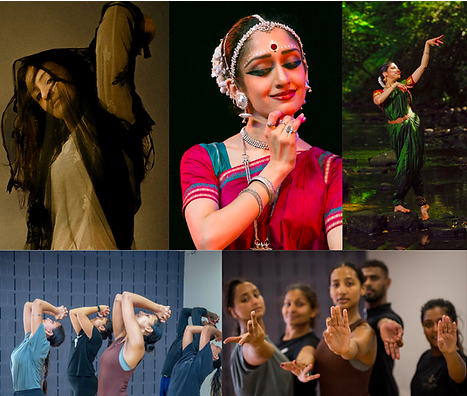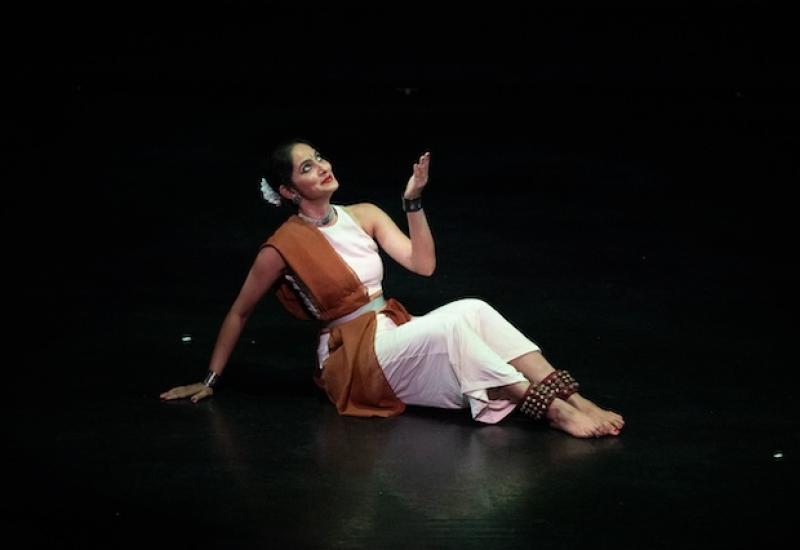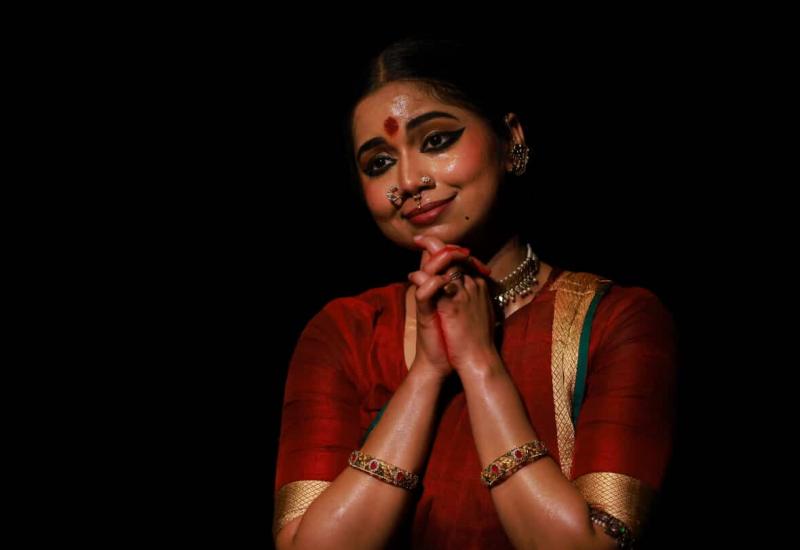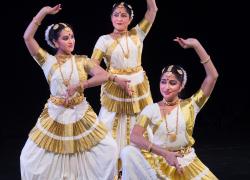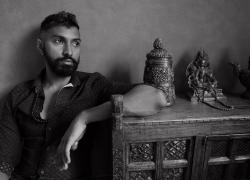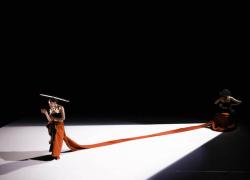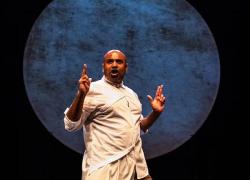Hemantika Festival Day 2
Hemantika Festival, Day 2
Sujata Banerjee Dance Company
November 12, 2022,
Lilian Baylis Studio Theatre, Sadler’s Wells, London
Reviewed by Stacey Prickett
Celebrating the seventh year of Sujata Banerjee Dance Company’s Hemantika Festival, the second of three shows celebrated innovation. Three solos by young choreographer-dancers drew from their classical dance roots while a contemporary technique group dance was enriched with kathak components, offering diverse visions of the theme of ‘journey’. The intimacy of the Lilian Baylis Theatre Studio stage suited the programme, with Joshua Harriette‘s lighting designs enhancing innovative aspects of the works.
Delhi-based Arushi Mudgal’s Dvandva used traditional vocabulary to explore multiple meanings of ‘conflict’. A celebrated exponent of odissi, her understated yet powerful abhinaya conveyed life’s journey across a range of emotions from the highs of love to the depths of hate. Her gestures evoke mundane activities or engage in conversation with an elegant fluidity, clarity of line and rich expressiveness, responsive to the intricacies of the score by Madhup Mudgal. Moving out of the spotlight or up from the floor for the nritta passages, rhythmic and virtuosic footwork consumed space, traversing the stage in a contained energy. A dialogue is played out that encompasses the serenity of internal contentment, moving to the depths of despair and back to internal peace. We are taken to the moment of transcendence through the elegance of her performance, ending in stillness.
One of two kathak-based works, Kesha Raithatha’s The Lost Breath, evoked a natural landscape, enhanced by a soundscape of music, birds, rain and text (by Deya Dova, Kevin Wrenn, Liquid Bloom, Anilah and ‘Sufi’ by Nicki Wells for Aakash Odedra Company, compiled by Sanjay Dattani and the choreographer). Raithatha’s breath and snapping fingers alerted us to her presence in the dark, before she was revealed standing in spirals of light. Small undulations came to full energy to travel up her body, arms reaching out, torso stretching into off-centre leans counterbalanced by a raised leg. Resonances of kathak are seen in fluid arm and hand gestures, crisp successive turns and clarity of footwork. Taken to their extreme and beyond, the actions move into back falls to the floor, shoulder rolls with the same power of the upright expansive movement. Lit spirals on the floor mark pathways across the stage as a voiceover brings to life ritual ceremonies of female ancestors, a sense of trance and ritual. Although a solo work, a sense of community and rising power emerges as the energy of movement cycles through phases. White flowers are offered to the four sides of the stage in affirmations that build in intensity as the flow of turns is accentuated by long hair and costume, ecstatic trance-like progressions contrast to the exploration of earth in the floorwork. The multi-layered score of drum, vocals, and nature sounds conjure images of fire, rain and legacy. Creating a path of red flowers, Raithana settles to embrace the ground in a moment of resolution. Part of a longer piece in progress, shifts between kathak and contemporary dance vocabularies are seamless.
Sections of text offered internal dialogue to Payal Ramchandani’s kuchipudi dance Just Enough Madness. Starting with an evocation of the joy of motherhood, insecurities are vocalised and visualised, her internal struggles laid bare. Responding to real and imagined voices through gestural language Ramchandani explored the flows of diverse relationships, mythical and human power and grief. Self-doubt emerges physically in attacking footwork, travelling steps to either escape or stand one’s ground. A pendulum of emotions manifest through intense abhinaya reveal how deeply pain is internalised. Manipulation and entrapment are embodied in puppet-like movement, actions controlled by others at the end, as Ramchandani is constrained further in a box of light. Bhagyalakshmi Guruvayur, Ramu Raj, Supriya Nagarajan, Duncan Chapman, Kiran Gopinath, Prathap Ramachandra, Rajesh Cherthala, Praveen Prathapan, and Sharad Sharma contributed the blend of traditional music and text.
Sujata Banerjee Dance Company closed the evening with Gary Clarke’s vibrant Portraits From Home, inspired by the dancers’ reflections on ‘home’. Everyday clothes took us into the vernacular landscape, opening with Tulani Kayani-Skeef and Mithun Gill prone on the floor, gradually arising as if awakening for the day to join Kesha Raithatha, Jaina Modaisa and Showmi Das. A series of comical frantic snapshots create a playful atmosphere as they move in and out of group poses into duets, trios and quartets. Daily routines such as cooking and eating are evoked as they kneel in individual boxes of light, their unison passages interrupted by break out moments, moving in and out of rapid phrases. The rich instrumentation of Shammi Pithia’s score was echoed in intricate choreography that drew on the gestural clarity of kathak. The travelling steps exude a sense of joy, with limbs and torsos reaching out into full arcs of movement. Individual personalities are celebrated, along with diverse visions of what home, family and belonging can be.
Reflecting on the concept of innovation around which the show was programmed, the choreographic explorations connected with everyday life by expressing inner conflicts and experiences. Spiritual or mythical resonances seem interwoven with the ordinary, helping establish connections beyond classical symbolism and conventional narratives in ways that enhance access to South Asian dance for those of us outside the forms.
Stacey Prickett is a Senior Honorary Research Fellow in Dance at the University of Roehampton. She co-edited the Routledge Companion to Dance Studies (2020), and wrote Embodied Politics: Dance, Protest and Identities (2013), in addition to numerous book chapters and journal articles with a focus on dance, power and politics.

